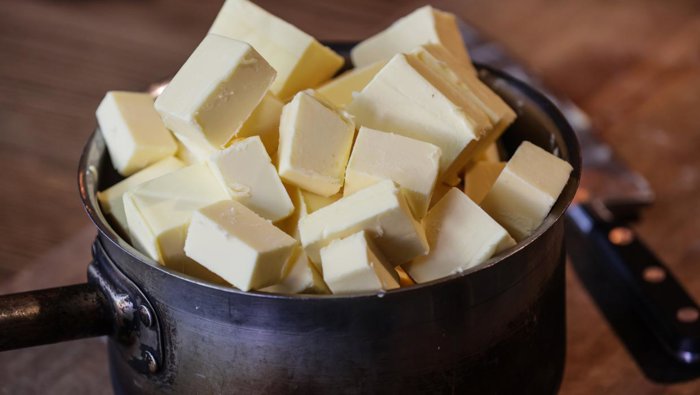
Germany’s Big Grocers Slash Butter Prices to €1.59–€1.79
Retailers cite easing input costs, passing savings to shoppers after the €2.39 peak in late-2024 and volatility tied to milkfat levels and bluetongue.
Berlin — September 15, 2025. Butter is getting cheaper across Germany’s biggest supermarket chains, easing household grocery bills after last year’s record highs. Following an initial move by Lidl, major retailers including Aldi Nord and Süd, Edeka, Rewe, Netto, Norma, Kaufland and Penny said they are lowering shelf prices on 250-gram (8.8-ounce) private-label packs of “Deutsche Markenbutter” by €0.20—typically dropping standard store brands to €1.79, with some lines going to €1.59 depending on the retailer DIE ZEIT.
Aldi detailed the cuts in a company statement: its Milsani Deutsche Markenbutter 250g falls to €1.79 (from €1.99), while Milsani “Streichfein” spreadable butters (salted and unsalted) drop to €1.59. Organic butter is reduced by €0.50 to €2.99, and Irish butter decreases to €2.49. The discounter framed the move as a permanent reduction tied to lower input costs aldi-nord.de.
Industry outlets also report parallel markdowns at Lidl—whose price signal set off the broader chain reaction—alongside reductions for organic butter (–€0.50 to €2.99), certain Irish butters (to €2.49), and selected plant-based spreads (for example, Lidl’s vegan “No Butter” at €1.79). These changes are described as nationwide and “dauerhaft” (permanent) in scope Lebensmittelpraxis.de.
From record highs to relief at the dairy case
The price shifts cap a year-long reversal from the all-time high reached in October 2024, when the cheapest 250-gram pack of German brand butter climbed to €2.39, a level not seen before. Prices have been trending lower since early February 2025, slipping back under the two-euro mark and stabilizing into late summer stern.de.
Analysts attribute the earlier run-up to tighter milk supplies and a lower fat content in raw milk—factors that shrank available milkfat for butter. The situation was aggravated in the summer of 2024 by bluetongue disease, which depressed milk yields in affected herds. These supply-side constraints, combined with robust demand for fat-rich dairy products, pushed wholesale cream and retail butter to new highs before easing this year ami-informiert.de.
Why retailers move together
Butter is a classic “key price” item in Germany: once one leading discounter shifts down, competitors typically match quickly to avoid being undercut on a staple. That dynamic explains the near-simultaneous announcements from Lidl, Aldi and full-line grocers like Edeka and Rewe. As wholesale inputs fall, retailers have more room to pass savings on to consumers—and in a price-sensitive environment, doing so can boost foot traffic without sacrificing competitiveness elsewhere in the basket DIE ZEIT.
The long view
Despite the current relief, butter has seen sharp swings over the past few years. In the summer of 2023, many stores were briefly selling private-label 250-gram packs at around €1.39, while branded products typically carried higher regular prices. Price volatility reflects the dairy market’s shifting fundamentals—milk deliveries, milkfat rates, and competing uses such as cheese—along with periodic animal-health disruptions. Official and industry reviews of 2024 highlight lower milk volumes and reduced average fat content as key pressures behind last year’s spike FR.de.
What shoppers can expect
For now, German households should see immediate, clearly labeled reductions on standard 250-gram store-brand butter, with deeper cuts on selected spreadables, organics, and some imported butters. If input costs continue to soften, retailers have signaled they will keep passing through savings—though the sector’s history suggests prices can turn quickly if milk supply, milkfat levels, or disease dynamics shift again Lebensmittelpraxis.de
Sources: DIE ZEIT FR.de aldi-nord.de Lebensmittelpraxis.de ami-informiert.de






